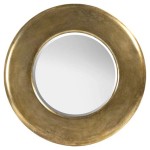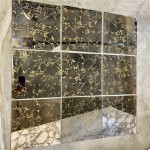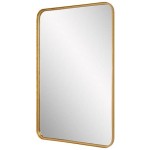How Can I Mirror iPhone to Macbook?
Mirroring an iPhone's display to a Macbook offers several advantages, from showcasing presentations and demos to sharing photos and videos with a larger audience or simply enjoying mobile games on a bigger screen. Several straightforward methods facilitate this screen mirroring, each catering to different needs and technical comfort levels.
Using AirPlay with a Compatible Mac
AirPlay is Apple's proprietary technology for wirelessly streaming audio and video content between devices. To mirror an iPhone to a Macbook using AirPlay, both devices must be on the same Wi-Fi network and the Mac must be compatible with AirPlay receiver functionality. Generally, Macs manufactured in 2018 or later support AirPlay receiving.
To initiate mirroring, open Control Center on the iPhone. Tap the "Screen Mirroring" button. Select your Mac from the list of available AirPlay devices. The iPhone's screen will then be mirrored on the Macbook's display. To stop mirroring, simply open Control Center on the iPhone again, tap "Screen Mirroring," and select "Stop Mirroring."
Utilizing QuickTime Player
QuickTime Player, a pre-installed application on macOS, provides another method for mirroring an iPhone to a Macbook. This approach requires a wired connection, offering potentially more stable and higher-quality mirroring compared to a wireless connection. It is particularly useful for scenarios requiring minimal latency, such as recording device demonstrations.
Connect the iPhone to the Macbook using a USB cable. Open QuickTime Player. Go to "File" in the menu bar and select "New Movie Recording." A recording window will appear. Next to the record button, there's a dropdown menu. Select the iPhone as the camera and audio source. The iPhone's screen will then be displayed within the QuickTime Player window. While this method doesn't technically "mirror" in the same way as AirPlay, it provides a live view and recording capability of the iPhone's display on the Macbook.
Mirroring through Third-Party Applications
Several third-party applications offer screen mirroring functionality between iOS and macOS. These applications often provide additional features like recording options, customizable resolutions, and enhanced performance. Researching and selecting a reputable third-party application suited to individual needs can provide a tailored mirroring experience.
When choosing a third-party app, consider factors like user reviews, pricing models, and compatibility with the specific iPhone and Macbook models. Always download such applications from trusted sources like the official App Store to avoid security risks.
Choosing the Right Mirroring Method
The most appropriate mirroring method depends on the specific requirements. AirPlay offers the convenience of wireless mirroring, suitable for presentations and casual sharing. QuickTime Player provides a wired connection for greater stability and recording capabilities, ideal for demonstrations and tutorials. Third-party applications offer additional features and flexibility but require installation and may involve associated costs.
Troubleshooting Common Mirroring Issues
Occasionally, users may encounter difficulties when attempting to mirror their iPhone to their Macbook. Several common troubleshooting steps can often resolve these issues.
First, ensure both devices are connected to the same Wi-Fi network and that the network is functioning correctly. Restarting both the iPhone and Macbook can also resolve temporary software glitches. Checking for and installing any available software updates for both devices is also recommended. For wired connections, ensure the USB cable is undamaged and properly connected to both devices. If using third-party applications, consult the application's documentation or support resources for specific troubleshooting guidance.
Optimizing Mirroring Performance
To optimize mirroring performance, particularly when using wireless methods, minimize the number of devices connected to the Wi-Fi network. Close unnecessary applications on both the iPhone and Macbook to free up system resources. Adjusting the screen resolution or mirroring quality within the chosen mirroring method may also improve performance, especially on older Macbooks.
Understanding the Limitations of Mirroring
While mirroring provides a convenient way to share an iPhone's screen, it's important to acknowledge certain limitations. Mirroring can introduce some latency, especially over wireless connections. Protected content, such as some streaming videos or copyrighted material, may not be mirrored due to digital rights management (DRM) restrictions. Certain apps may also restrict mirroring functionality. Understanding these limitations helps manage expectations and select the most appropriate mirroring method for the intended purpose.

How To Mirror Iphone Display Macbook Ios 12 Macos Mojave

Newest How To Mirror Iphone Mac Macbook Airdroid

How To Screen Mirror Iphone Macbook 2024

How To Screen Mirror Ios 13 Iphone A Mac Or Windows Computer Wirelessly

2024 Updated How To Mirror Iphone Mac With 5 Methods

5 Easy Steps To Mirror Iphone Mac Istreamer

2024 Updated How To Mirror Iphone Mac With 5 Methods

How To Use Apple Airplay Mirror Your Iphone Mac Screen On Tv Roku And More Cnet

Full Guide Efficiently Mirror Iphone To Macbook Wireless

How To Mirror Iphone Mac 2024








